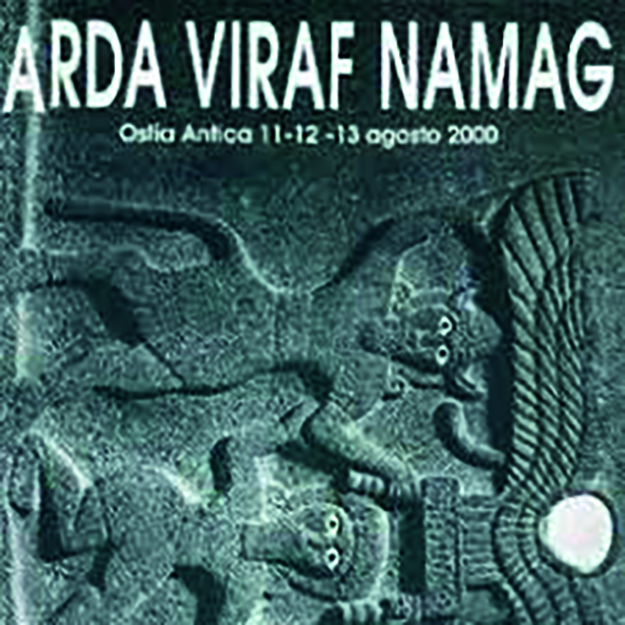Parsi Times presents a 4-part series by Adil J. Govadia, which honours and celebrates our humble Mobeds – our religious heads, who played a crucial role in preserving our Community’s religious and ethnic identity, while keeping aflame our sacred fires, in our temples and in our hearts.
 There are several virtuous Zoroastrian priests within the community, both in ancient Persia and in India. The likes of Adarbad Marespand and Arda Viraf were highly evolved and pious spiritual leaders during the Sassanian period. In India too, there were and continue to be many morally upright and righteous priestly souls who led the community with a great distinction and scholastic brilliance.
There are several virtuous Zoroastrian priests within the community, both in ancient Persia and in India. The likes of Adarbad Marespand and Arda Viraf were highly evolved and pious spiritual leaders during the Sassanian period. In India too, there were and continue to be many morally upright and righteous priestly souls who led the community with a great distinction and scholastic brilliance.
Sometime in the early-14th century, Mobed Meherwan Kaikhusro, the renowned Persian scribe and great grand-nephew of Rustom Meherwan, visited India at the instance of Jalal Sangam of Cambay to write religious manuscripts. He spent over thirty years travelling to places like Navsari, Khambat, Thana and Daman, writing several scholarly religious manuscripts for the benefit of future generations. Similarly, in the early 15th century, Rana Kamdin and Lakhmidhar Behram wrote the old ‘Arda Viraf Nameh’, said to be one of the earliest known Parsi-Gujarati versions. The book ‘Arda Viraf Nameh’, originally written during the reign of the first Sassanian King Ardeshir Papakhan, preaches morality and ethics, besides providing graphic description of various sins and admonitions from spiritual entities like Ahura Mazda, Sarosh Yazad etc.
Mobed Mulla Feroze bin Mulla Kaus (1758-1830), a native of Bharuch, was a renowned Persian scholar. He authored Desatir – an ancient religious Persian work, as well as the epic ‘George Nameh’ which depicts the British conquest of India. He was a Kadimi Mobed who led an austere life, devoted to religious studies, which were sought after by religious scholars worldwide.
Dastur Framroze Navroji Kutar Dastur Darab Pahlan (1868-1957), High Priest of the Bhagarsath tola (sect) from Surat, and his brother Dastur Mahiyar Navroji Kutar Dastur Darab Pahlan, Head Priest of Maneckji Sett Agiary, jointly co-authored the translation of the magnum opus, ‘Shahnameh’ in ten proficient volumes. Dastur Framroze also compiled a dictionary of Farsi language in Gujarati script, comprising nearly 1,75,000 words and their meanings. Of his nine decade-long life, he spent 70 years in service of two Dar-e-Mehrs in Mumbai – the Rustam Faramna Agiary at Dadar and Tata Agiary at Bandra.
 Dastur Jamshed Sohrab Kukadaru (1831-1900) was a virtuous soul of great fame, renowned for his deep spiritual knowledge and simple lifestyle. His spiritual mentor was the mystic from the 16th century – Dastur Azar Kaiwan bin Azar Gushasp bin Zardushi from Patna. Dastur Kukadaru Saheb was a gifted astrologer, divine healer, religious scholar and a brilliant alchemist, all rolled into a simple pious human being who lived the life of a hermit. As a result of certain spiritual disciplines, prayers and ritual powers, he had developed qualities of clairvoyance and prophetic telepathy. He accurately predicted the deaths of Queen Victoria and Shams-ul-Ulama Dastur Dr. Peshotan Beheramji Sanjana.
Dastur Jamshed Sohrab Kukadaru (1831-1900) was a virtuous soul of great fame, renowned for his deep spiritual knowledge and simple lifestyle. His spiritual mentor was the mystic from the 16th century – Dastur Azar Kaiwan bin Azar Gushasp bin Zardushi from Patna. Dastur Kukadaru Saheb was a gifted astrologer, divine healer, religious scholar and a brilliant alchemist, all rolled into a simple pious human being who lived the life of a hermit. As a result of certain spiritual disciplines, prayers and ritual powers, he had developed qualities of clairvoyance and prophetic telepathy. He accurately predicted the deaths of Queen Victoria and Shams-ul-Ulama Dastur Dr. Peshotan Beheramji Sanjana.
As a Panthaky of Kappawalla Agiary in Bombay, Dastur Kukadaru commanded tremendous respect from the community as he healed the sick and the infirm with the power of ashoi (righteousness) and manthrawani (recited prayers). Even today, his portrait hangs in almost all Atash Behrams and religious institutions.
Dastur Kaikhushru Dastur Darab Behram-Framroze (1796-1868) was a highly respected and illustrious Vada Dastur of the Shahenshai Atash Behram of Surat, which was installed under his supervision. The Dokhmas at Surat (1825) and Aroli (1858) were consecrated by him. Likewise, Dastur Dr. Jamaspji Minocherji Jamaspasana (1830-1898), Vada Dastur of Punjab, Aden and Anjuman Atash Behram in Bombay was a Pahlavi scholar of repute, whose Pahlavi Dictionary attracted considerable attention in Europe (Ref. ‘Parsi Luster on Indian Soil’ by H.D. Darukhanawala).
Shams-ul-Ulama Dastur Dr. Darab Peshotan Sanjana (1857-1931), an illustrious son of a celebrated father, was a Gold Medalist in advanced religious studies. He was an insightful Avesta and Pahlavi scholar and author of several masterly elucidations. He was a linguist as he was fluent in French, German and Sanskrit. On his father’s death in 1898, he was appointed Vada Dastur of Wadiaji Atash Behram. He earned his PhD from the university of Germany and was conferred the title of Shams-ul-Ulama for his profound religious studies.
Similarly, Gold Medallist Dastur Kaikhushroo Mahiyar Kutar (1888-1975), son of Dastur Darab Dastur Pahlan, was appointed Panthaky of Dadar’s Rustom Faram Agiary in 1929, before he was elevated as the Vada Dastur of Wadiaji Atash Behram, in 1938. On this distinctive occasion he was presented 275 shawls, from several religious leaders, Parsi Anjumans and social institutions, asserting his popularity across India. After serving the Atash Behram for ten years, he voluntarily stepped down in 1948. In 1950, he visited Iran where he was given an audience with the Shah of Iran.
- કેવો સુંદર જવાબ! - 29 March2025
- પારસી સન્નારીઓ તેમના જાદુઈ સ્પર્શ સાથે બની સુરત મેરિયોટ અથવા લાઇન્સના રસોડાની રાણીઓ - 29 March2025
- મોબેદ મેહરાબાન ફિરોઝગરીનું અવસાન - 29 March2025
